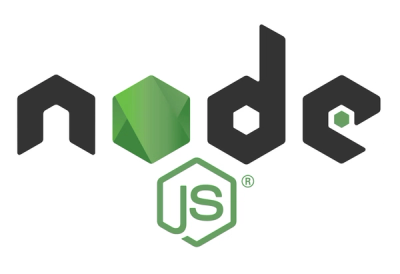
Security News
Django Joins curl in Pushing Back on AI Slop Security Reports
Django has updated its security policies to reject AI-generated vulnerability reports that include fabricated or unverifiable content.
@sentry/browser
Advanced tools
The @sentry/browser package is a JavaScript SDK for Sentry, which is an error tracking service that helps developers monitor and fix crashes in real time. The SDK hooks into the global error handling mechanisms of the browser and captures unhandled exceptions and other errors, providing rich context and insights into the underlying issues.
Error Tracking
This feature automatically captures JavaScript exceptions and sends them to Sentry for analysis and tracking. The code initializes Sentry with a DSN (Data Source Name) and sets up a global error handler to capture exceptions.
Sentry.init({ dsn: 'YOUR_DSN' });
window.onerror = function (errorMsg, url, lineNumber, column, errorObj) {
Sentry.captureException(errorObj);
return false;
}Manual Error Reporting
This allows developers to manually report exceptions or errors to Sentry. The code block demonstrates how to catch an error in a try-catch block and manually send it to Sentry using the captureException method.
Sentry.init({ dsn: 'YOUR_DSN' });
try {
// Code that might fail
} catch (error) {
Sentry.captureException(error);
}Performance Monitoring
This feature enables performance monitoring by capturing transactions and spans. The code initializes Sentry with a sample rate for transactions and demonstrates how to start and finish a transaction, which can be used to measure the performance of operations.
Sentry.init({ dsn: 'YOUR_DSN', tracesSampleRate: 1.0 });
const transaction = Sentry.startTransaction({ name: 'test transaction' });
// ... some code ...
transaction.finish();Breadcrumbs
Breadcrumbs are a trail of events that happened prior to an issue. This feature allows you to record breadcrumbs manually. The code shows how to add a breadcrumb for an authentication event.
Sentry.init({ dsn: 'YOUR_DSN' });
Sentry.addBreadcrumb({
category: 'auth',
message: 'User authenticated',
level: Sentry.Severity.Info
});User Feedback
This feature allows you to collect user feedback when an error occurs. The code initializes Sentry and then shows a dialog to the user to collect feedback for a specific event.
Sentry.init({ dsn: 'YOUR_DSN' });
Sentry.showReportDialog({ eventId: 'event_id' });Bugsnag provides similar error tracking and monitoring capabilities as Sentry. It offers real-time error reporting and can be used to monitor application stability. Bugsnag also provides features for error diagnostics and supports multiple platforms.
Raygun is another error monitoring service that offers crash reporting with detailed diagnostics. It supports real-time error tracking and performance monitoring, and it can be used to identify and diagnose software errors and performance issues.
Rollbar offers real-time error tracking and is similar to Sentry in its capabilities. It includes features like telemetry, person tracking, and version tracking. Rollbar provides a comprehensive dashboard for monitoring and analyzing errors.
To use this SDK, call Sentry.init(options) as early as possible after loading the page. This will initialize the SDK
and hook into the environment. Note that you can turn off almost all side effects using the respective options.
import * as Sentry from '@sentry/browser';
Sentry.init({
dsn: '__DSN__',
// ...
});
To set context information or send manual events, use the exported functions of @sentry/browser. Note that these
functions will not perform any action before you have called Sentry.init():
import * as Sentry from '@sentry/browser';
// Set user information, as well as tags and further extras
Sentry.setExtra('battery', 0.7);
Sentry.setTag('user_mode', 'admin');
Sentry.setUser({ id: '4711' });
// Add a breadcrumb for future events
Sentry.addBreadcrumb({
message: 'My Breadcrumb',
// ...
});
// Capture exceptions, messages or manual events
Sentry.captureMessage('Hello, world!');
Sentry.captureException(new Error('Good bye'));
Sentry.captureEvent({
message: 'Manual',
stacktrace: [
// ...
],
});
9.10.0
feat: Add support for logs
beforeSendLog (#15814)All JavaScript SDKs other than @sentry/cloudflare and @sentry/deno now support sending logs via dedicated methods as part of Sentry's upcoming logging product.
Logging is gated by an experimental option, _experiments.enableLogs.
Sentry.init({
dsn: 'PUBLIC_DSN',
// `enableLogs` must be set to true to use the logging features
_experiments: { enableLogs: true },
});
const { trace, debug, info, warn, error, fatal, fmt } = Sentry.logger;
trace('Starting database connection', { database: 'users' });
debug('Cache miss for user', { userId: 123 });
error('Failed to process payment', { orderId: 'order_123', amount: 99.99 });
fatal('Database connection pool exhausted', { database: 'users', activeConnections: 100 });
// Structured logging via the `fmt` helper function. When you use `fmt`, the string template and parameters are sent separately so they can be queried independently in Sentry.
info(fmt(`Updated profile for user ${userId}`));
warn(fmt(`Rate limit approaching for endpoint ${endpoint}. Requests: ${requests}, Limit: ${limit}`));
With server-side SDKs like @sentry/node, @sentry/bun or server-side of @sentry/nextjs or @sentry/sveltekit, you can do structured logging without needing the fmt helper function.
const { info, warn } = Sentry.logger;
info('User %s logged in successfully', [123]);
warn('Failed to load user %s data', [123], { errorCode: 404 });
To filter logs, or update them before they are sent to Sentry, you can use the _experiments.beforeSendLog option.
feat(browser): Add diagnoseSdkConnectivity() function to programmatically detect possible connectivity issues (#15821)
The diagnoseSdkConnectivity() function can be used to programmatically detect possible connectivity issues with the Sentry SDK.
const result = await Sentry.diagnoseSdkConnectivity();
The result will be an object with the following properties:
"no-client-active": There was no active client when the function was called. This possibly means that the SDK was not initialized yet."sentry-unreachable": The Sentry SaaS servers were not reachable. This likely means that there is an ad blocker active on the page or that there are other connection issues.undefined: The SDK is working as expected.SDK Tracing Performance Improvements for Node SDKs
dropUndefinedKeys (#15796)dropUndefinedKeys for spanToJSON calls (#15792)SentryError for PromiseBuffer control flow (#15822)dropUndefinedKeys in SpanExporter (#15794)SentryError for event processing control flow (#15823)dropUndefinedKeys in Node SDK init (#15797)We've been hard at work making performance improvements to the Sentry Node SDKs (@sentry/node, @sentry/aws-serverless, @sentry/nestjs, etc.). We've seen that upgrading from 9.7.0 to 9.10.0 leads to 30-40% improvement in request latency for HTTP web-server applications that use tracing with high sample rates. Non web-server applications and non-tracing applications will see smaller improvements.
FAQs
Official Sentry SDK for browsers
The npm package @sentry/browser receives a total of 8,139,948 weekly downloads. As such, @sentry/browser popularity was classified as popular.
We found that @sentry/browser demonstrated a healthy version release cadence and project activity because the last version was released less than a year ago. It has 10 open source maintainers collaborating on the project.
Did you know?

Socket for GitHub automatically highlights issues in each pull request and monitors the health of all your open source dependencies. Discover the contents of your packages and block harmful activity before you install or update your dependencies.

Security News
Django has updated its security policies to reject AI-generated vulnerability reports that include fabricated or unverifiable content.

Security News
ECMAScript 2025 introduces Iterator Helpers, Set methods, JSON modules, and more in its latest spec update approved by Ecma in June 2025.

Security News
A new Node.js homepage button linking to paid support for EOL versions has sparked a heated discussion among contributors and the wider community.